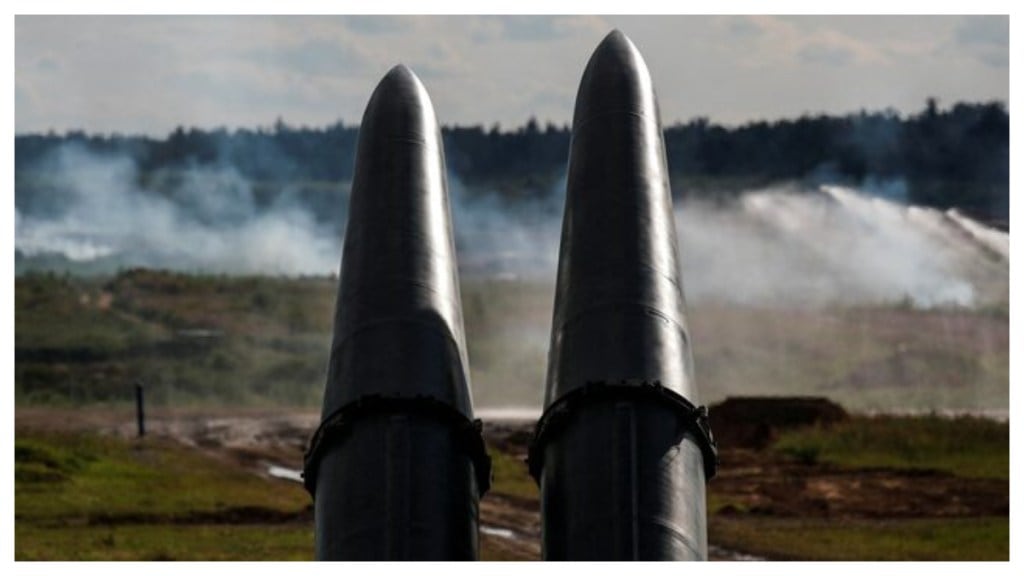In a significant escalation of the ongoing conflict in Ukraine, President Vladimir Putin announced that Russia had deployed its newest hypersonic medium-range ballistic missile, the “Oreshnik” (Hazel Tree), targeting a Ukrainian defence facility. The missile strike came in response to Ukraine’s use of US and British-supplied weaponry against Russian targets, signalling heightened tensions with global implications, reports Reuters.
What is the “Oreshnik”?
The “Oreshnik” missile represents a new era of Russian hypersonic weaponry. Capable of travelling at speeds ten times faster than sound, it is designed to be nearly impossible to intercept. With a reported range of 5,000 kilometres (3,100 miles), the missile can strike targets across Europe and even reach the west coast of the United States.
Equipped with multiple independently targetable re-entry vehicles (MIRVs), the “Oreshnik” can carry six to eight warheads, conventional or nuclear, hitting multiple targets simultaneously. Russian military experts suggest the missile, likely based on the RS-26 Rubezh intercontinental ballistic missile (ICBM), is already in active service.
What Did Putin Say?
In a stark warning, Putin declared that the Ukraine war is inching toward a global conflict. He justified the missile strike as retaliation for Ukraine’s use of Western-supplied missiles, which he claimed had been used to target deeper into Russian territory.
On November 21, the “Oreshnik” was launched at Pivdenmash (Yuzhmash), a missile and space rocket manufacturing hub in Dnipro, Ukraine. Putin emphasised that such actions were necessary to protect Russia’s interests, hinting at potential future strikes if Western nations continue arming Ukraine.
What Does Ukraine Say?
Ukraine’s response was swift and unequivocal. President Volodymyr Zelenskyy labelled the missile attack a “clear and severe escalation,” urging the global community to condemn Russia’s actions.
Ukraine’s air force initially claimed that an intercontinental ballistic missile (ICBM) had been used, but this was refuted by US intelligence. ICBMs are defined by their range of over 5,500 kilometres (3,400 miles), while the “Oreshnik” falls under the intermediate-range category.
The RS-26 and Hypersonic Evolution
The “Oreshnik” is believed to share its design lineage with the RS-26 Rubezh, a solid-fuel, road-mobile missile developed in 2008. This missile system became a point of contention between the United States and Russia, particularly after the U.S. exited the Intermediate-Range Nuclear Forces (INF) Treaty in 2019. The treaty had previously banned the development of such weapons, citing their destabilizing potential.
The RS-26 program exemplifies how Russia has prioritized hypersonic advancements, aiming to outpace Western missile defences. The withdrawal from the INF Treaty has further emboldened Moscow’s development of intermediate-range systems like the “Oreshnik.”
Economic and Geopolitical implications
The deployment of the “Oreshnik” underscores the financial and strategic investments Russia is channelling into its military. Hypersonic missile technology is costly, with individual missiles potentially exceeding $20 million in production costs. Sustaining such advancements amid Western sanctions adds further strain to Russia’s economy.
For Ukraine, the attack on Pivdenmash signifies not only a military setback but also a blow to its industrial infrastructure, complicating post-war recovery efforts. The strike raises concerns about the vulnerability of critical economic assets in wartime.
Global defence budgets are also under pressure. Western nations, particularly the United States and NATO allies, may need to accelerate investments in missile defence systems to counter hypersonic threats. Such developments could trigger an arms race, with economic ripple effects on both military and civilian sectors worldwide.
What’s Next?
As tensions escalate, the “Oreshnik” could become a symbol of the broader technological and strategic shifts in modern warfare. For Russia, it represents a show of strength. For Ukraine and its allies, it underscores the urgent need for robust defence strategies and sustained international support.
The use of hypersonic missiles in the conflict signals a dangerous turn, with potential implications for global security and economic stability. As the situation unfolds, the world will closely watch how nations navigate this precarious moment in history.


